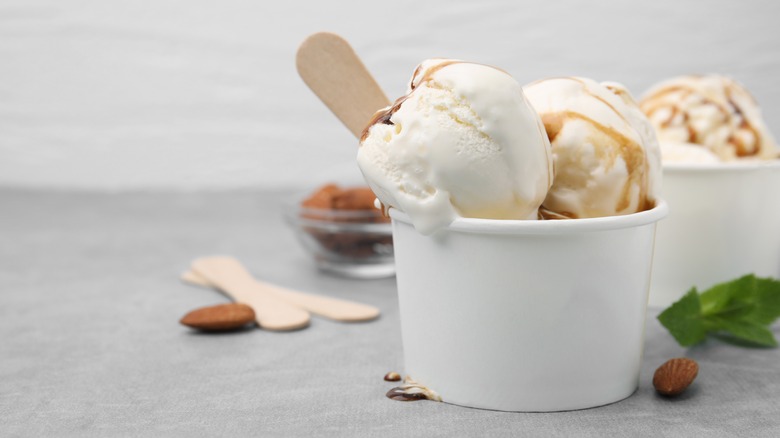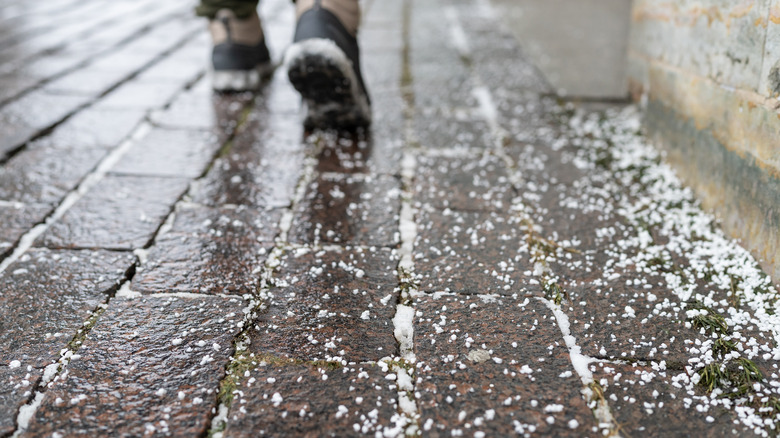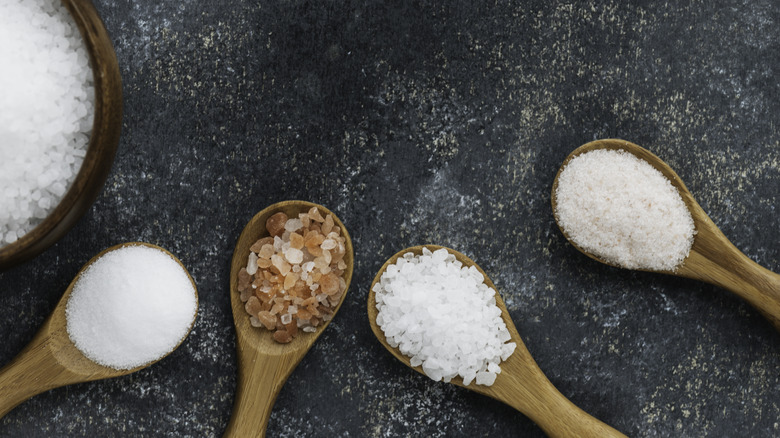Salt Is The Key To Keeping Ice Cream Frozen In A Cooler
A quality icebox is essential for bringing goodies like popsicles and ice cream along on your summer outings, but when the temperatures start to rise in the middle of the day, even the highest-rated cooler will struggle to keep your ice cream frozen. One controversial method of extending the usefulness of the ice is to salt it. In a viral TikTok video, user @sugar.berrios demonstrates how adding a layer of table salt over the ice can help keep it from melting.
The concept isn't new, and its effectiveness has been debated for years. Some say it's the only way you should ever pack a cooler, while others dub the idea a load of hogwash, referencing the fact that salt is used to melt ice and keep it from re-freezing during colder winter months when water solidifies outside much faster than it does in your freezer. To settle the debate once and for all, adding salt to ice does help it stay cool longer by lowering the freezing point of water, but to fully understand how this phenomenon occurs, we need to turn to science.
Freezing point depression helps keep ice frozen
Lowering the freezing point of a liquid by introducing another substance to the mix is called freezing point depression. When salt comes in contact with ice, it dissolves and melts it, creating a brine solution that obstructs frozen crystals from forming. This mixture can have a much lower freezing point than pure water — which freezes at 32 F — depending on the amount of salt used. A heavy application of salt can lower the freezing point to as low as -5 F. This technique of applying salt to ice to keep it from melting is also used when making homemade ice cream and when you are trying to chill a bottle of wine.
The salt melts some of the ice, but as the solution cools while surrounded by frozen water, the temperature drops and helps to keep the remaining ice from melting. By adding salt to the mix, you can keep your ice cream frozen in the cooler for up to 50% longer than ice alone because of freezing point depression. However, the amount of salt you add is key to getting the longest life out of your ice.
Use enough salt to keep your ice cold
The key to getting your ice to melt slightly and create a brine that lowers the freezing point of water is to add the correct amount of salt. Without enough salt, the ice won't melt and won't help to extend how long you can keep things like ice cream frozen in your cooler. The amount of ice you need depends on how big your ice cubes are and what kind of salt you are using, but as a rule of thumb, ¾ cup of salt for every 4 pounds of ice should do the trick.
When it comes to what kind of salt you use, sodium chloride salts like table, kosher, and sea salt will all do the trick. But while sodium chloride gets the job done, there are other types of salt that will lower the freezing point of water even more. Potassium chloride, calcium chloride, and magnesium chloride all have the ability to lower the freezing point of water below what sodium chloride can decrease it to — down to -10 F if properly applied. Adding salt to your ice won't keep it from melting forever, but it will buy your ice cream or frozen gelato some extra time on those hot summer days.


